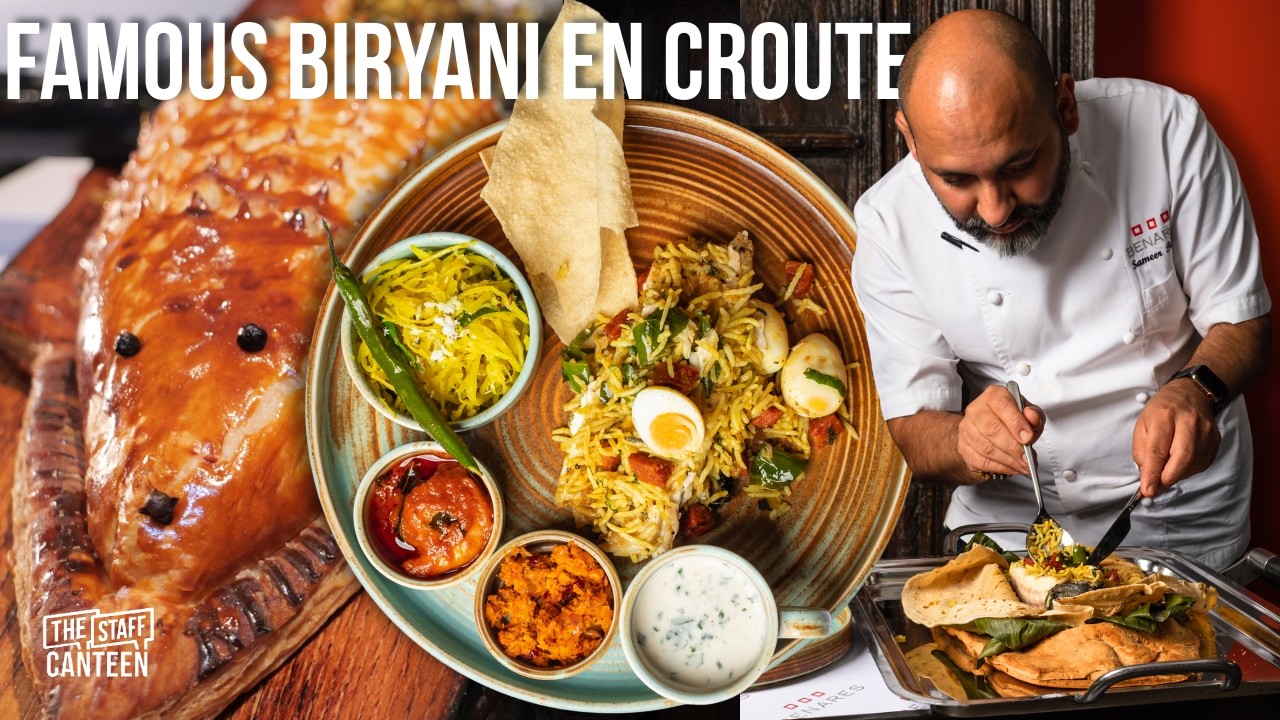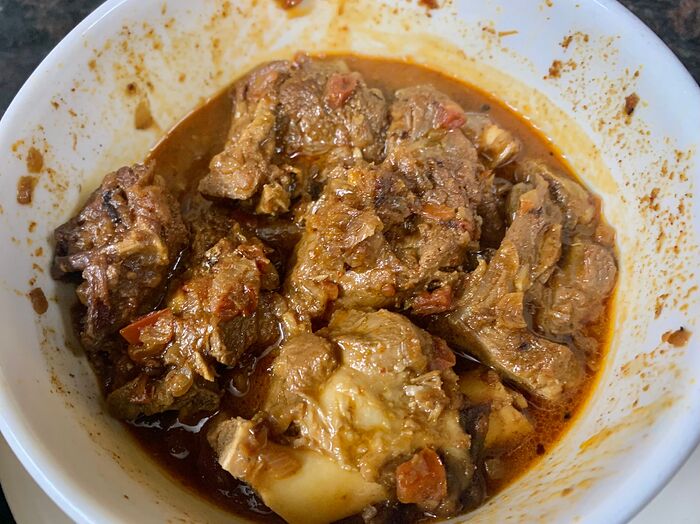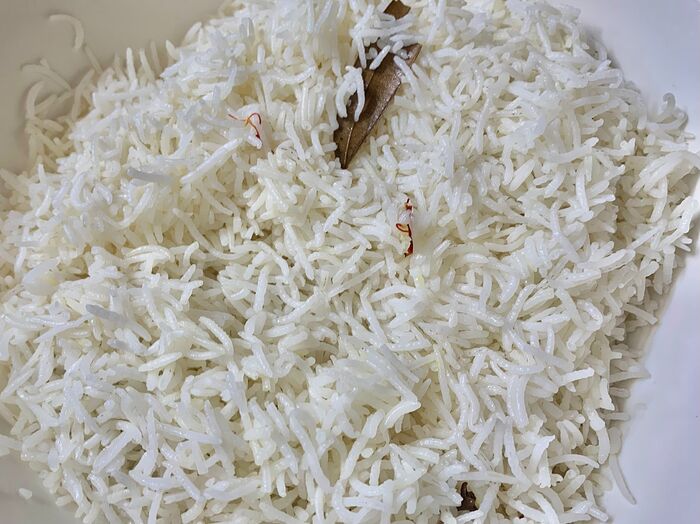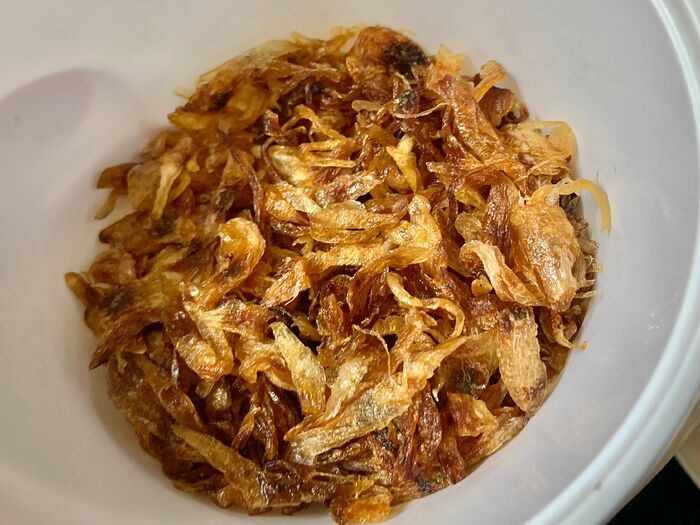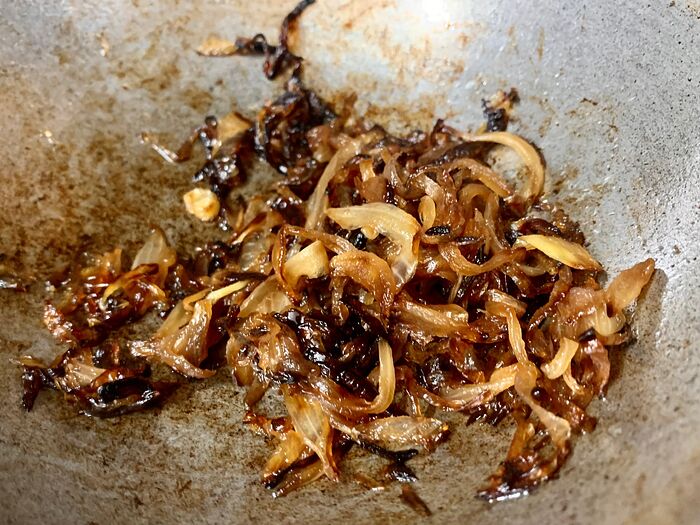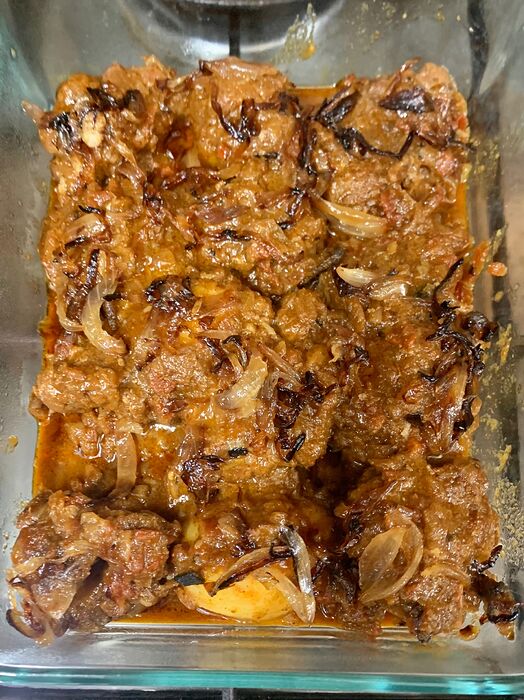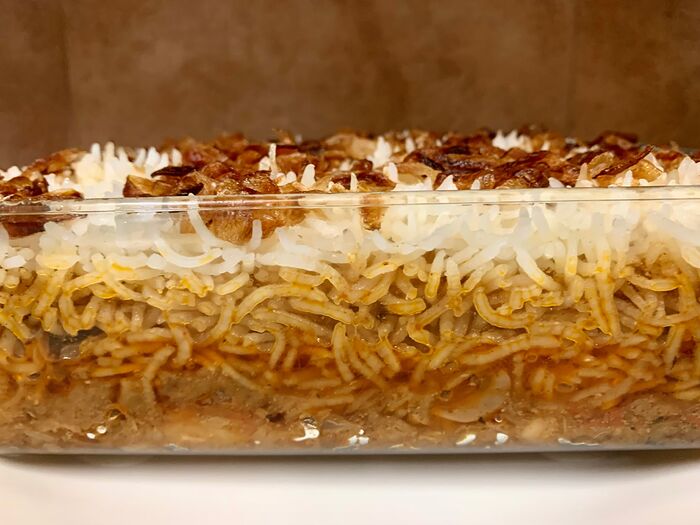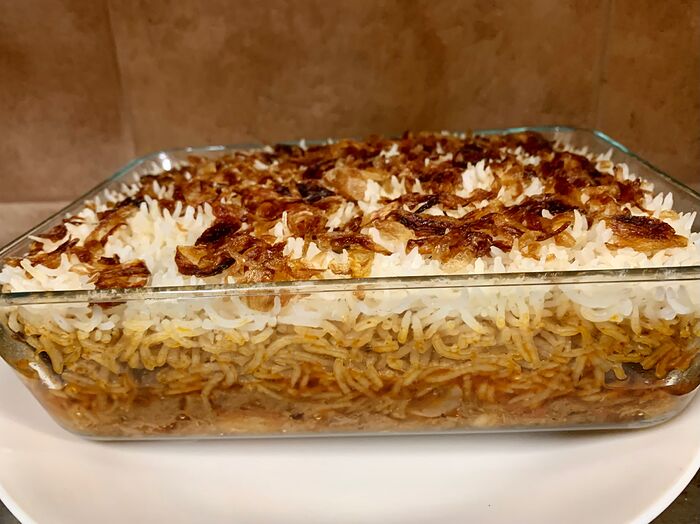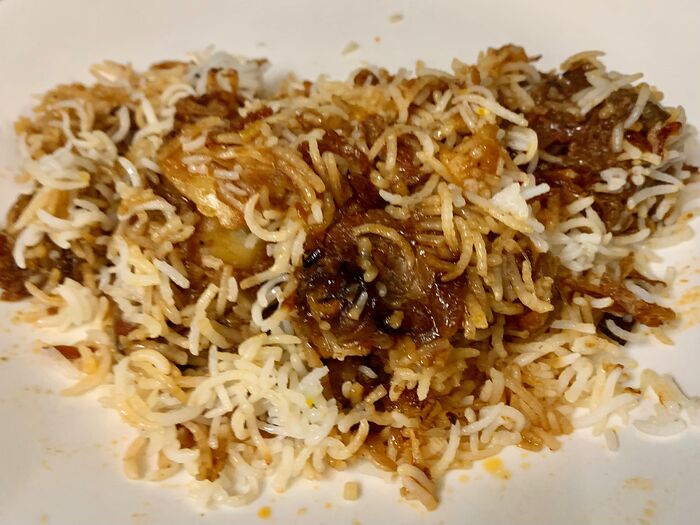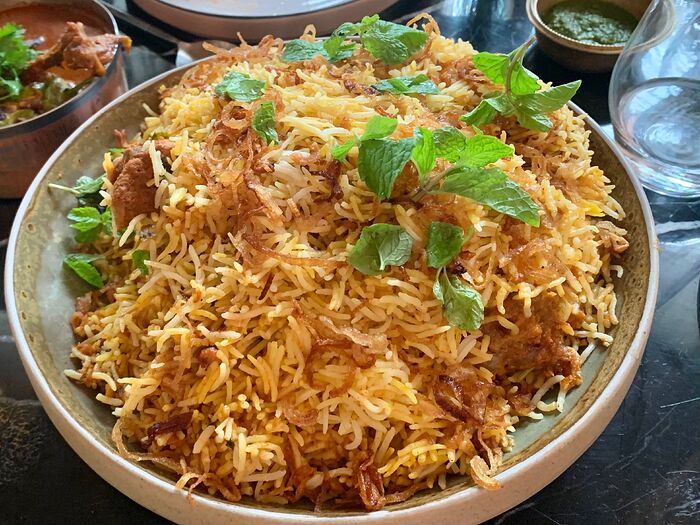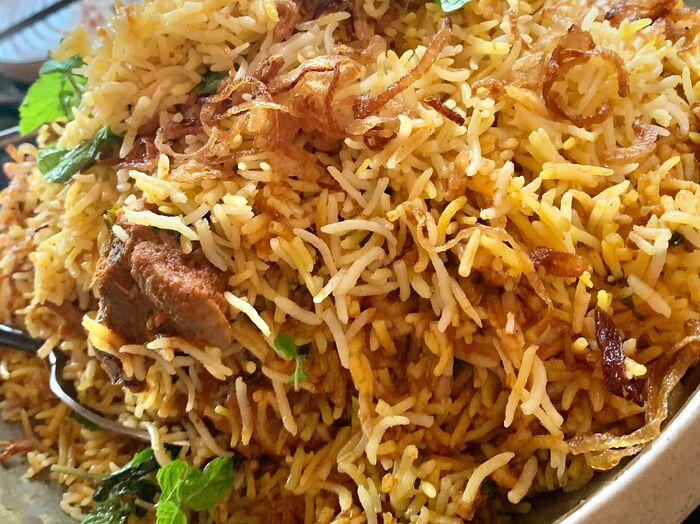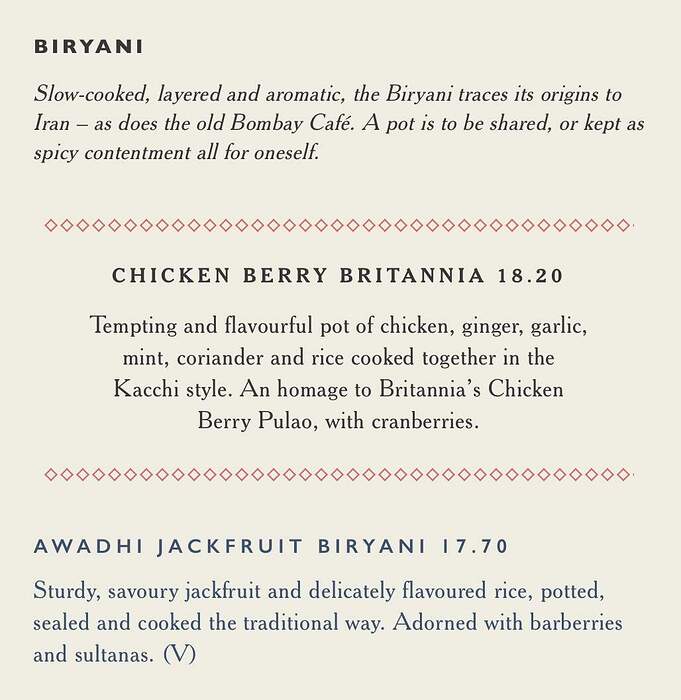(post deleted by author)
And the best biryani I have eaten was an Ismaili biryani made by the late wife of a frenemy. She was the best! She was able to tailor the heat to a level (extremely mild) that my tender mouth and gut can tolerate. Unfortunately at age 45 an aneurysm took her.
I’m sad to hear she had a short run, but I’m glad you had a chance to try her home cooking!
We had a friend from Uganda, who was Ahmadi Muslim, rather than Ismaili, and he could not tolerate spicy curries. Maybe the Ahmadi East African cooking is similar to Ismaili / Khoja cooking, and on the milder side, or can be tailored to be less spicy? There’s more information about Khoja recipes from East Africa online.
Ismaili cooking can be fiery as well. I have many Ismaili friends (after attending the Aga Khan high school in Uganda), and have had some mouth-blistering experiences.
I was wondering: if you just leave out the chilis from a recipe, do you miss something apart from the heat in the dish? I’m thinking about the chilis interacting with the other ingredients to produce something else (akin to reactions in a chemistry lab).
@Saregama and @medgirl might have more insights on this topic than I have.
I often leave garlic our completely, for some recipes lately. Something is missing.
The recipe usually still tastes good. I would think it could be the same with Chiles and other pepper.
I was surprised how spicy one butter chicken I ordered was last year. I was expecting the sweet type that is common in pan Indian restaurants. It was a completely different dish, having a lot more Chile or other hot pepper added. It didn’t give me a fix for my Butter Chicken craving. I would think it works the other way, too, for spicy dishes that have the hot stuff left out.
This is one of my favourite cookbooks - a hardcover edition I bought in India for the incredible price of 795 rupees (around 8 pounds) - an absolute bargain for the quality of book and the amazing content. You can see the multiple post-it sticky notes sticking out from the top where I have made notes on recipes in the book.
@BarneyGrubble @Phoenikia Re: hot spiciness - there is a difference between spicy and hot. Mindless hot like is seen in British Bangladeshi ‘Indian’ restaurant food as cooked for British lager louts is just achieved by dumping an unjudged quantity of hot chilli powder into a curry.
Regional cooking has its own variations which can be tweaked to some extent without losing the soul of the recipe. Bengali food is not known for its hot spiciness but the recipes often involve chilli powder, dried red chillies or fresh green chillies. These are added to the dish in a manner which enhances the overall flavour without causing excessive heat. Raw fresh chillies are usually always available on the side along with lime wedges for people who want a bit of extra zing. My husband always eats raw whole fresh chillies alongside his rice and curry - more for the flavour than the heat. I prefer fresh chillies that have had a period of cooking in the curry itself - and mash them into the rice to create a gentler heat.
There are also plenty of spices which add flavour but not heat. A good cook can layer these skilfully to create a great flavour profile. A very experienced cook can layer hot spices within these to create an dish which is not actually hot but addictively spicy.
Your tolerance of heat is definitely greater than mine! Chillies cause me so much pain that flavor is non-existent to me! I’m not your typical Goan who has an iron gut; I’m also not much of a drinker of alcohol.
At a local Indian buffet restaurant, the waiter assured me that nothing but the vindaloo was hot. There was only one item I could handle, plus the gulab jamuns. Ironically, that restaurant used to house one of my favorite French restaurants; I prefer French to anything else.
It’s interesting that your Goan heritage hasn’t influenced your tolerance of heat. My best friend in school was from Goa (Hindu Konkani family where the parents spoke fluent Portuguese in addition to Konkani, English and Bengali). Her mother would make very toned down (in her view) versions of Konkani dishes which were still really hot by my Bengali standards - but so delicious!
That book formed the basis of this Saveur article, I think
Indeed. There was a thread about spiciest cuisine a while back, might have been before you were here.
Not the way my Bengali friends cook ![]() – I am the “wimpy baby” they have to tone it down for, and I can take a good level of spiciness! But freshly ground mustard seeds + mustard oil have a different kind of heat too, and add spicy green chillies into the mix and it’s a new level unlocked
– I am the “wimpy baby” they have to tone it down for, and I can take a good level of spiciness! But freshly ground mustard seeds + mustard oil have a different kind of heat too, and add spicy green chillies into the mix and it’s a new level unlocked ![]()
We stocked mild green chilies at home for so long because my dad couldn’t take the spicy ones, that when we got some spicy ones to mix in occasionally, we sometimes forgot that there were two kinds… OOPS!
Same thing happened when my mom accidentally filled real red chilli powder (reshampatti or byadagi which are just “medium” lol) in the masala box one day instead of mixing in half Kashmiri (which is mostly for color, not flavor, as you know) – no one could figure out what happened for 2 verrrryyyy spicy days ![]()
It’s either dried apricot or dried plum, I am unclear on the translation or if it has an exact western equivalent. The Indian words I’ve heard used are aloo bukhara, jardaloo / zardalu, and so on. Which translate to dried plum and dried apricot variously depending on where one looks.
There are always a few in commercial “Bombay biryani” masala packets.
(As you mention Parsi biryani, I was informed by someone Parsi either here or on Chowhound that Parsi wedding biryani is made by Muslim caterers, though the rest of the bhonu is from Parsi caterers.)
From my pantry (stocked solely for biryani):
Here is a picture of the residual pit that might be encountered (the flesh having melted away into the masala) — there are only a few pits in a entire pot, so not everyone might find one.
Another day, another Biryani — mutton / goat biryani started by mom and finished by me.
The korma / meat base made by mom was pretty perfect. We made the rice, potatoes, and birista / fried onions, layered, and finished.
Not as good /rich as when mom makes the whole deal ![]() — but still excellent
— but still excellent ![]()
RAAN BIRYANI
Raan = whole leg of goat / lamb.
We ordered a “half” portion, which looked like 2 or 3x the portion we get of my usual biryani.
Well-spiced but gently spiced — somewhere between Bombay biryani and Awadhi / Lucknow. No potatoes ![]()
I would guess that the raan was marinated and cooked first, it was spoon-tender. The bone-in raan was at the center of the bowl, with the rice covering it — we had to take some meat off the bone for each serving.
Excellent.
Oh.
My.
Goodness.
That looks phenomenal.
I think you just decided which type of restaurant I will be going to this evening for dinner. Now to search for “best biryani in London” on Chowhound…
And I came up with your reco for casual type of restaurant is Dishoom. Maybe I can sneak in if I go for an early lunch there. I see Jackfruit and Chicken Berry as the two choices, neither of which I recognize. I will report back if I get in.
I had been thinking of going to Tamarind Kitchen but the menu at Dishoom looks even more interesting.
On edit: It took me a while but I just realized how many Dishooms there are. I think my chances are good of getting a table.
Nope, berry pulao is NOT biryani!
For biryani, I’d go to one of the old school traditional places.
Or check if Asma Khan is doing her Biryani supper club while you’re there.
It’s hard to find decent biryani in London. I liked Gymkhana’s but it was many years ago and is very expensive for the portion.
I would guess Amaya, Veeraswamy, Chutney Mary, Benares, and similar all have traditional biryani on their menus.
Most lower / mid priced spots will be pakistani or Bangladeshi, rather than indian. In my experience, the biryani is much drier and differently flavored.
But you’re in London, and there’s an abundance of riches where Indian food is concerned, so you could just take a flyer.




